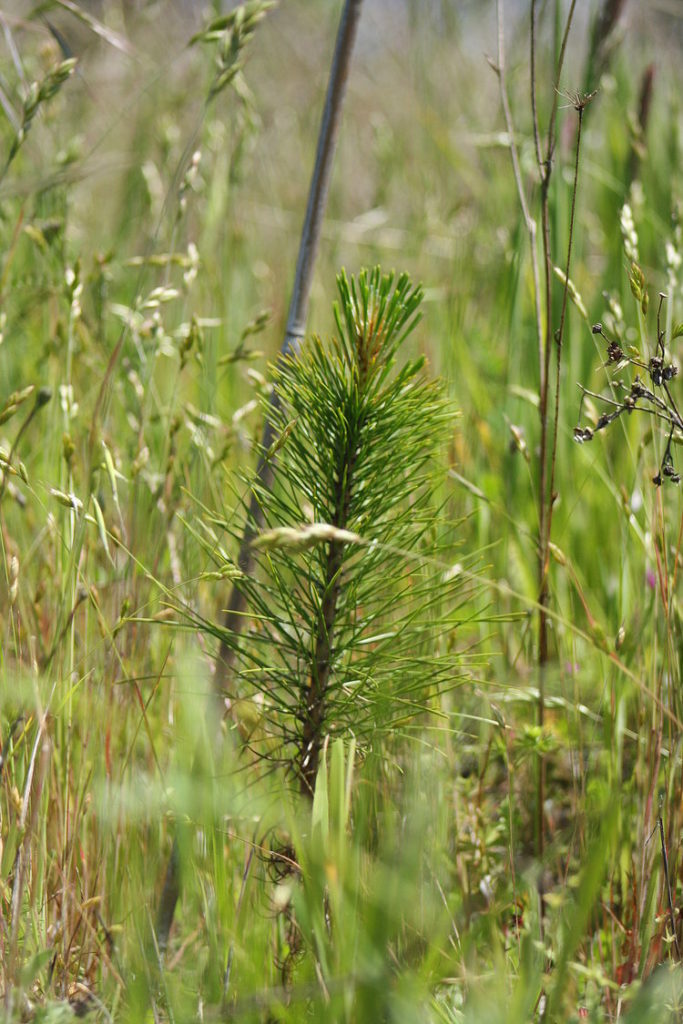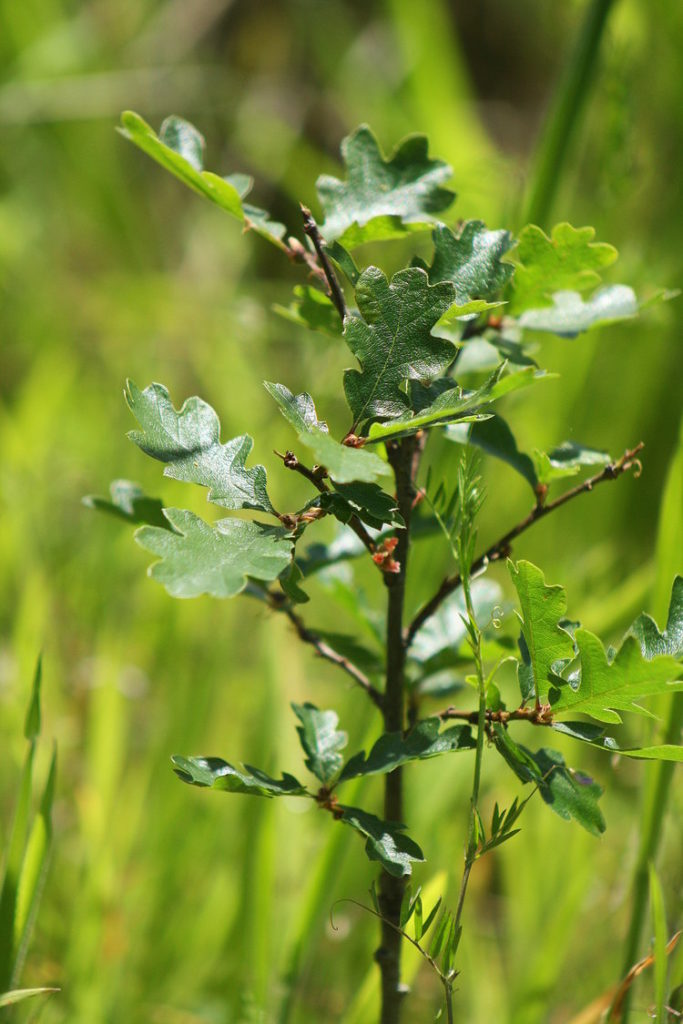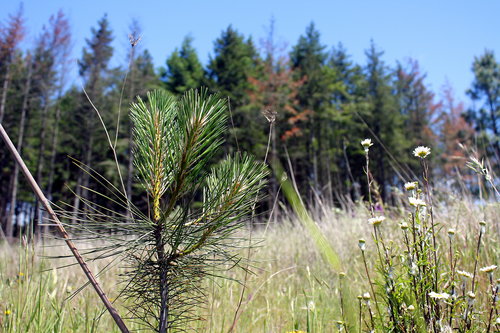Stewarding Woodlands in a Changing Climate

Ben Deumling and his family steward Zena Forest, a member of NNRG’s group FSC® certificate. The largest contiguous block of forest in the Eola Hills of the Willamette Valley, Zena Forest has not been immune to the impacts of climate change. Facing large-scale Douglas-fir die-off, Ben describes below how he and his family are experimenting with planting less-traditional tree species—ones more tolerant to a warming climate.
I have been watching trees grow for 32 years in my family’s Zena Forest, nestled nearby in the Eola Hills. And I have gotten to know it well during that time. Over the last 10 years, I have noticed some significant changes in the trees and the forest as a whole, and not for the better.
All forests are inherently dynamic. They are constantly changing as the ecosystem moves through a succession of cycles. The changes we have observed over the last decade, though, are orders of magnitude larger than what one might expect from a forest in our region.
I have seen large-scale die-offs, primarily of Douglas fir. Springtime has taken on an element of apprehension for local nature observers, as the lush bright green of new growth on the tips of the fir branches is interspersed with red tips, signifying the first outward sign of a tree starting to die.
Over the past decade, changes in our climate have produced longer, hotter and drier summers, coupled with less frequent but more intense winter rains. These are the local symptoms of global climate change, which entails an intensification of weather patterns, pushing both rain and drought to new extremes. The climate changes have directly coincided with increased mortality in our local Douglas fir stands. Drought and heat stress weaken the tree’s immune system, making it more susceptible to pathogens and bug infestations destined to finish the job.
Since 2015, our local Zena Forest, the largest contiguous patch of woodland left in Oregon’s Willamette Valley, has lost nearly 10 percent of its Douglas fir. The composition of the forest is changing, whether we like it or not.
Good tree cover is essential to a healthy forest ecosystem. Keeping the ground shaded with a healthy complement of understory shrubs not only provides habitat for a wide range of important species, but serves to hold moisture in the soil well into our dry summers, slowly releasing water into our local streams. To this end, we have been experimenting with the planting of less traditional tree species to replace the fir we are losing.


Both Oregon white oak and Ponderosa pine are native to the Willamette Valley, and historically grew in much greater abundance. These trees tolerate a wide range of growing conditions and display much greater fire resistance, so have proven viable replacements.
Anticipating this changing climate, we started planting incense cedar as well 15 years ago.
Though not native to the Mid-Valley, its historical range encompasses the dry rocky hillsides of southern Oregon. It has thrived in our forest, nestled in the Eola Hills west of Salem, thanks to increasingly drier and warmer growing conditions.
In an effort to enable our forest to thrive for future centuries, despite the dramatic effects of climate change, we try to predict which trees will find growing conditions favorable years from now. That has also led us to start planting coast redwood and giant sequoia, already showing great promise.

There is very little known about how climate change will affect local forest ecosystems. Scientists are just starting to explore these questions. We need to foster more professional as well as citizen science to advance our understanding. Forests naturally adapt to changing climate, but on a very gradual time scale.
Forests provide a critical suite of benefits to Oregonians. As land managers, we have the opportunity to anticipate change and manage accordingly. With careful planning, we will continue to have patches of forest throughout the Willamette Valley.
Climate change is not static. The patterns we are currently experiencing will most assuredly continue to become more severe. That makes forest stewardship an exercise in long-term forward thinking. We need to anticipate whether the trees we plant in 2019 will grow well here in 50 years or more.
I am not ready to begin planting palm trees, but given the climate predictions on our horizon, that might not be as crazy as it sounds. With the uncertainty of our climate future, we need to maximize the diversity and complexity of tree species populating our local forest ecosystem, and that is exactly what we are trying to do here in the Zena Forest.
Originally published by the Yamhill Valley News Register.

Leave a Reply